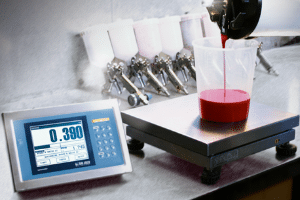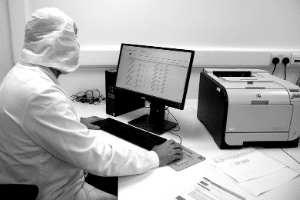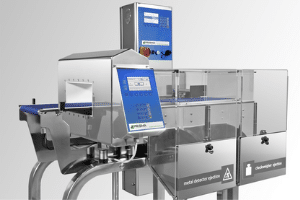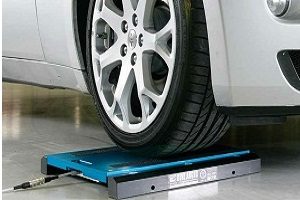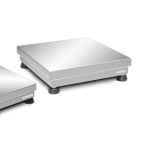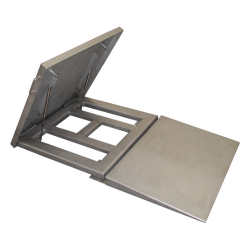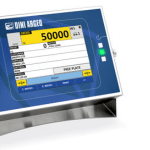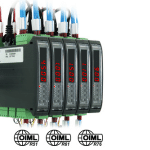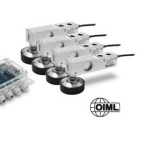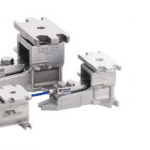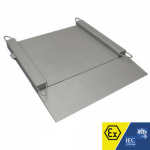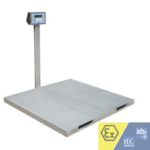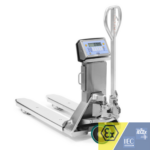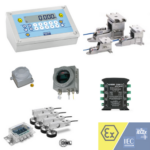How Automated Weighing Can Drive Profitability in Bulk Materials Handling
Imagine walking through a production facility where staff are visually estimating fill levels, occasionally adjusting settings based on instinct rather than data. As products move along the line, some are overfilled which costs the business money, while others are under filled, risking non-compliance and unhappy customers. The manager knows they’re skating on thin ice with regulators and hopes there won’t be another visit from trading standards.
This scene is still common in many UK manufacturing sites, where weighing systems are either outdated or missing altogether. There’s a lingering perception that automated check weighing is complex, disruptive, and expensive to implement. But that’s no longer the case.
In reality, the weighing sector has advanced significantly. Integration is now more accessible, affordable, and user-friendly than ever before. This is especially true with the rise of automation, which has transformed how weighing is used for quality control and process efficiency.
Why measurement matters
Legendary business thinker Peter Drucker famously said, “What gets measured gets managed.” Nowhere is this more relevant than in the world of bulk processing. Accurately measuring material flows isn’t just about meeting compliance, it’s about reducing waste and protecting profits. Even small improvements can lead to significant financial gains.
Automated control brings consistency
Manual methods introduce a wide margin for error. Estimating fill levels by eye or relying on visual indicators inevitably leads to inconsistent results. This leads to giveaway due to overfill or the risk of rejection from under filling.
By contrast, automated systems that are connected to PLCs and intelligent control units can manage filling processes in real-time. These systems analyse trends rather than reacting to every small fluctuation, enabling precise, gradual corrections. This approach tightens tolerances and improves accuracy, even in fast-paced environments.
A major benefit is the reduced need for operator intervention. Once calibrated and configured, these systems operate autonomously, decreasing human error and increasing reliability.
What you get is less material waste, more consistent net weights, and higher confidence in product quality from both customers and regulators.
Connectivity and integration options
Today’s weighing technologies offer flexible integration. They can function as standalone tools or be embedded into broader plant control infrastructures. Feeding data into systems like SCADA or MES is straightforward using common protocols such as RS485, ProfiNET, or EthernetIP.
Advanced weighing indicators can capture a range of production data including shift details, product IDs, and job numbers, and relay them in real-time to managers. This enables immediate insight into line performance, helping to flag issues before they snowball into bigger problems.
It’s also easier than ever to connect weighing systems with other production technologies, such as robotic palletisers or automatic labellers, creating a fully linked process chain.
Dispelling the myths
Many businesses still assume that implementing weighing systems requires massive investment or will disrupt production for weeks. That’s simply no longer true. Today’s load cell systems are not only more cost-effective, but also designed for ease of installation, even into tight or awkward spaces.
Manufacturers of weighing equipment have developed solutions that account for real-world constraints, including explosive (ATEX) environments, where costs have historically been a major hurdle.
In many cases, businesses can see a return on investment within months. Take a process using materials worth £700 per tonne. If you reduce product giveaway by just 2% across 400 tonnes a month, that’s £5,600 in savings. Weighing systems capable of driving these efficiencies often cost less than a couple months’ worth of that figure, making the investment decision simple.
Starting your automation journey
There’s a world of difference between checking weights after production and monitoring them during the process. The latter helps prevent problems, whilst the former only tells you once it’s too late.
For companies unsure about where to start, a consultation with a weighing specialist can help assess existing processes and identify simple upgrades. But full system overhauls aren’t always necessary. Something as straightforward as adding load cells to an existing conveyor might deliver quick wins with minimal disruption.
Looking ahead
Weighing technologies have made huge strides in recent years. Integration is easier, costs are lower, and the performance benefits are clear. Whether you’re operating in food, chemical, or pharmaceutical manufacturing, automated weighing should be part of any lean, data-driven production strategy.
In a competitive market where every gram matters, investing in weighing automation can give your business the edge it needs, not just to meet compliance, but to thrive.
If you’re interested in learning more, get in touch with us today and one of our automation specialists would be happy to help with a free, zero-obligation consultation.

